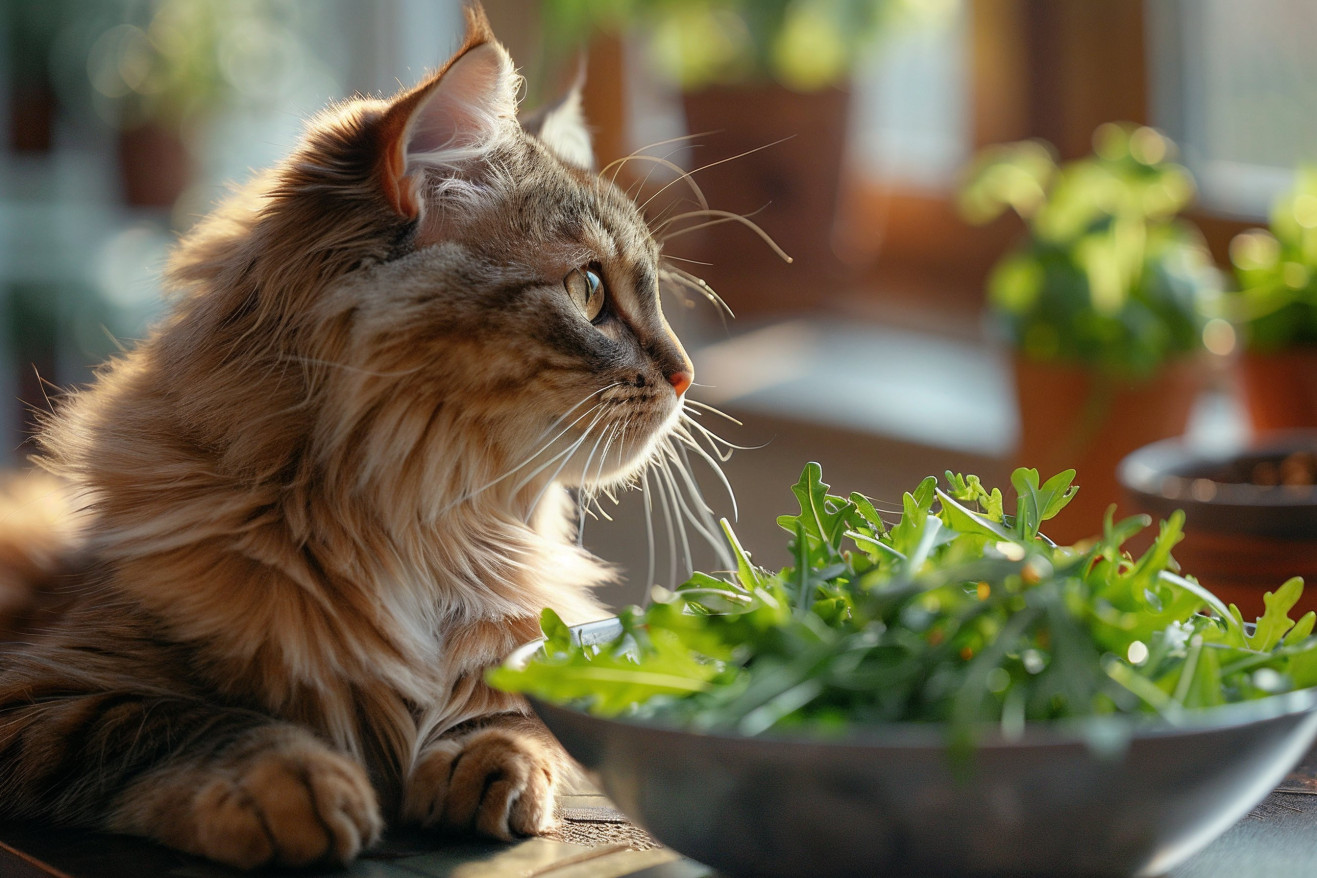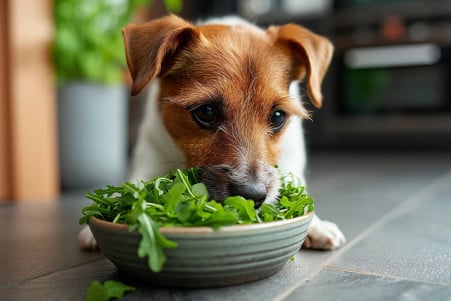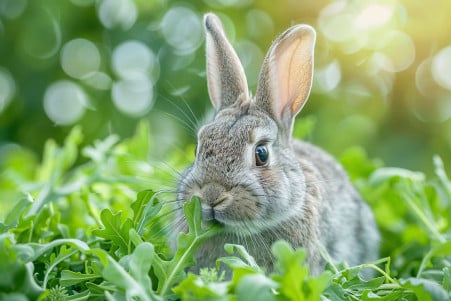Can Cats Eat Arugula? A Vet Weighs In
19 May 2024 • Updated 17 May 2024

If you’ve ever found yourself wondering whether or not your cat can eat arugula, you’ve come to the right place to get the answers you need. Arugula is safe for cats to eat and can be a healthy addition to their diet in moderation. It’s full of important nutrients like vitamins A, C, and K, and it also contains antioxidants that can help support your cat’s overall health. That said, it’s important to remember that arugula should be given to your cat as a treat and not as a replacement for their regular meals.
This article will review information from a number of different veterinary and other expert sources to help you better understand the potential benefits and drawbacks of giving arugula to your cat. From expert opinions on the topic to a detailed analysis of the nutritional content of arugula, you’ll get all the information you need to decide if this spicy green is a good choice for your cat or if you should skip it.
Can cats eat arugula?
Nutritional Value of Arugula for Cats
Arugula is a leafy green that is packed with vitamins and minerals that can be good for your cat. According to Cats Gossip, it has a high vitamin A content, which is important for a cat's immune system and skin health. It also has vitamin K, which is important for blood clotting and bone health. Arugula also has calcium, which is important for bone and teeth health, and potassium, which is important for muscle health and hydration.
In addition, Animal Gator points out that arugula has antioxidants that can help with overall health. It also has folate and vitamin C, both of which help with collagen production and have antioxidant benefits. The fiber in arugula can also help with digestion in small amounts.
That said, even though arugula has these nutritional benefits, a study highlighted by Medium points out that it doesn't have the animal-based proteins that cats need as obligate carnivores. As a result, while arugula can be a good source of some important nutrients when given as an occasional treat, it should be thought of as a supplement to a cat's well-rounded, protein-packed diet, not a replacement. Feeding a cat too much arugula could lead to a nutritional imbalance.
Moderation and Portion Control: How Much Arugula Can Cats Eat?
Arugula should be given to cats in moderation and as an occasional treat rather than a regular part of their diet. Cats Gossip recommends 1-2 small arugula leaves no more than 2-3 times a week. It's also important to introduce arugula to your cat slowly and adjust the portion size based on their reaction since feeding them too much arugula can cause digestive problems and nutritional deficiencies.
As Medium points out, cats should be eating a balanced diet of commercial cat food with arugula being an occasional healthy treat. It's important to practice moderation when introducing new foods to your cat to ensure their health and safety.
How to Feed Your Cat Arugula: A Step-by-Step Guide
As with any new food, it’s important to introduce arugula into your cat’s diet slowly, per PetMD. This means that you should begin by mixing a small amount of arugula in with your cat’s regular food and then gradually increase the amount of arugula you mix in over the course of a few days or weeks using a transition plan like 75% old food, 25% new food for days 1-2, then 50/50 for days 3-4, and so on.
Throughout this process, make sure to keep a close eye on your cat for any signs of digestive issues or allergies. According to Hill's Pet, a small amount of canned food can be used to entice cats to eat new foods while they’re transitioning. If your cat does have a negative reaction, stop feeding them arugula and talk to your vet, per All About Cats.
More Human Foods That Are (and Aren't) Safe for Cats
Besides arugula, there are a few other fruits and vegetables that cats can eat in small amounts. Purina lists cooked lean meats, eggs, bananas, berries, carrots, and pumpkin as examples of human foods that are safe for cats. On the other hand, chocolate, onions, grapes, and avocados are examples of human foods that are poisonous to cats and should be kept away from them at all times.
As ManyPets points out, cats are obligate carnivores, meaning that they need to eat meat to survive. As a result, their diet should be made up mostly of high-quality commercial cat food that's been specially formulated to meet their unique nutritional requirements. Although some human foods can be given to cats as an occasional treat, they should never be used to replace a cat's regular diet.
Before giving your cat any new human foods, make sure to talk to a vet, which is a point that's made by Sploot Vets. It's important to be careful and use human foods in moderation when you're introducing them to your cat's diet.
Conclusion: Arugula as an Occasional Treat for Feline Friends
Arugula can be a safe and nutritious addition to a cat's diet in moderation. It provides beneficial vitamins, minerals, and antioxidants for feline health, including vitamins A, C, and K, as well as calcium, folate, and potassium. These nutrients can help with skin health, digestion, and the immune system.
That said, cats are obligate carnivores and need a diet that's primarily made up of animal proteins. Arugula should be used as a supplement to a cat's regular diet, not as a replacement. Feeding a cat too much arugula can cause digestive upset, including vomiting and diarrhea. The recommended serving size is 1-2 small arugula leaves 2-3 times a week at most, and it should be introduced slowly so that you can watch for any signs of a bad reaction.
As with any new food, it's important to introduce it to your cat's diet slowly, starting with a small amount and gradually increasing it while observing your cat's response. If you notice any adverse effects, stop feeding your cat arugula and talk to your vet. While cats can eat some other human foods, including cooked meats, eggs, and certain fruits and vegetables, in moderation, many other human foods, including chocolate and onions, are toxic to cats and should be avoided.
Always talk to your vet before making any major changes to your cat's diet. Arugula can be a healthy occasional treat for cats, but it should not be used to replace the animal proteins and balanced nutrition that cats need from their regular diet.


